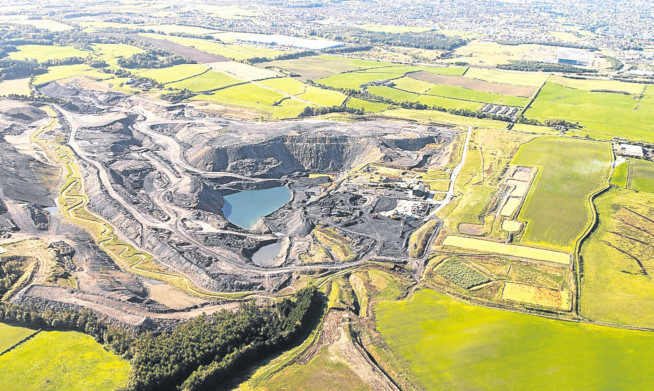Fife is heading for an environmental disaster if rapidly rising toxic water is allowed to reach the surface of a coal pit.
Pumping will be reintroduced at the defunct Michael colliery in East Wemyss within six weeks in a bid to control the surge of contaminated minewater.
Research has revealed the water level has risen by 130 feet in the last 18 years, prompting fears it could soon break the surface.
This is despite efforts to suppress it by pumping at the nearby Frances colliery in Dysart.
The water is contaminated with the natural earth pigment red ochre and uncontrolled breakouts could cause an environmental disaster, experts have claimed.
Further pressure was heaped on pit owners the Coal Authority at the end of last year when a national forum raised serious concerns that the water could become polluted with carcinogenic chemicals should the controversial process underground coal gasification (UCG) go ahead beneath the Firth of Forth.
The Industrial Communities Alliance (ICC), led by Professor Steve Fothergill of Sheffield Hallam University, discussed the possibility of fissures appearing in old mine seams during the coal burning process and allowing chemicals to leak into the environment.
Members said urgent efforts to reduce the water levels would have to be made.
Fife councillor Bob Young, a member of the alliance, said placing pumps at East Wemyss could just be a starting point.
“I think they’ll need a lot more pumps,” he said.
“There were four pits in that area and all the pumps were switched off. It’s a big, big worry.
“The same thing is happening in west Fife with Comrie, Valleyfield and Castlebridge.
“Officers have been tasked with finding out why the pumps were switched off, when they did it and why they didn’t tell communities about it.”
Mr Young added: “What I want to know is if they start fracking and UCG, will it cause even more problems with minewater pollution?
“I hope the Coal Authority utilises its budget to at least get in control of this.
“If you’re not controlling the water it will make its own way and could cause serious damage, including sink holes.”
Fellow ICC member Tom Adams welcomed the pressure put on the Coal Authority.
“The water is rising higher and higher and we all know they need to invest more money in it,” he said.
“Right after it was raised at that meeting the Coal Authority came out and said they would put a test pump in at the Michael.
“Until then, they were quite prepared to let it rise.”
While recognising pumping is urgently needed, East Wemyss councillor Jim Young said the Michael was the wrong place to carry it out.
“I’m concerned about the amount of coastal erosion that’s happened at the bing there,” he said.
“They’ve lost hundreds of feet and have already had to move the fence three times to bring it back from the face.
“I don’t think it’s an appropriate place to have pumping because it’s not the safest of places.
“Maybe the energy park would be a better place because they have coastal protection down there.”
The Scottish Environment Protection Agency (Sepa) has been notified by the Coal Authority that it intends to carry out pumping.
The pumping and discharge will be authorised under a licence from Sepa and will enable the Coal Authority to determine the requirements for a long-term minewater treatment scheme at the Michael.
In a briefing note, ICC members were told the Coal Authority agreed minewater levels were a problem.
The paper said: “The Coal Authority has granted licences for UCG off the Fife coast at Levenmouth and Kincardine.
“Residents are worried that UCG could potentially pollute Fife’s rising minewater with carcinogenic chemicals which could leak out into the environment, hence the increased concern over rising minewater.”
The alliance agreed to note the action being taken at East Wemyss and keep a watching brief.
The pumping of water was carried out routinely when the pits were in operation to ensure the shafts were kept clear.
The pumps were switched off when the collieries closed but it was always recognised they would have to be restarted as the water began rebounding up the seams, picking up contaminants along the way. If it is allowed to rise unchecked, it could break the surface and pollute rivers with red ochre which kills off plants and affects the local food chain.
